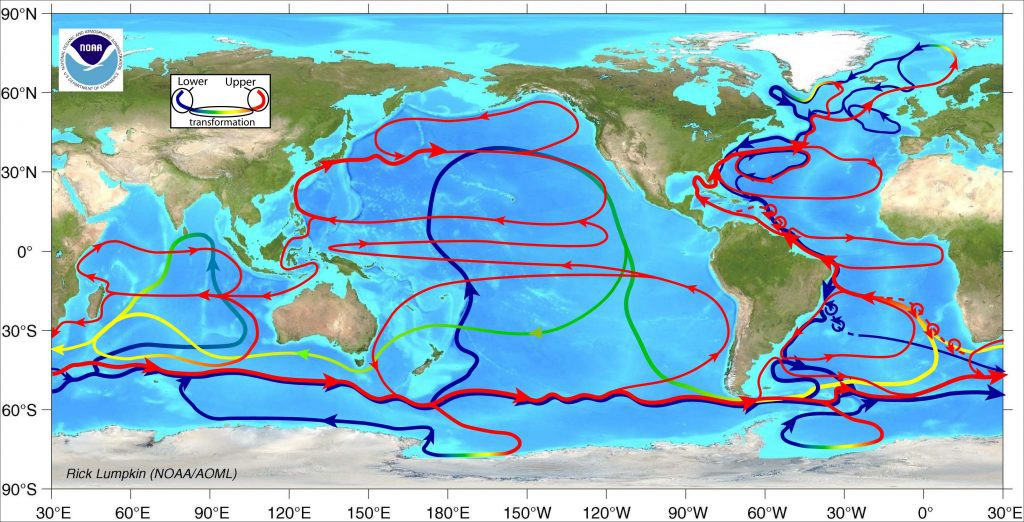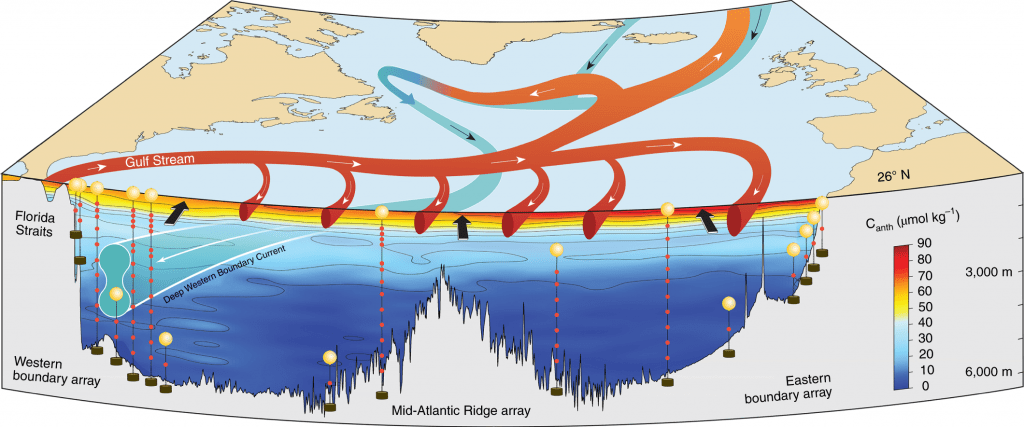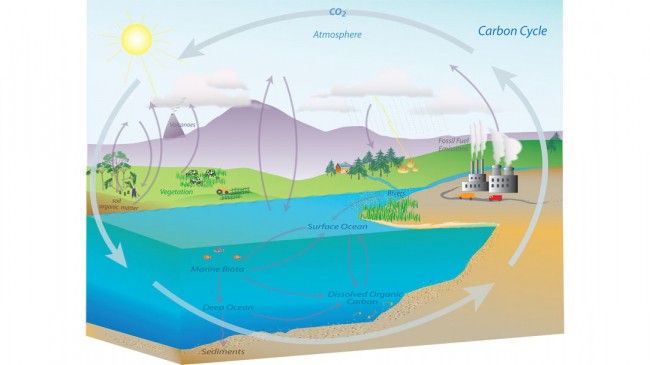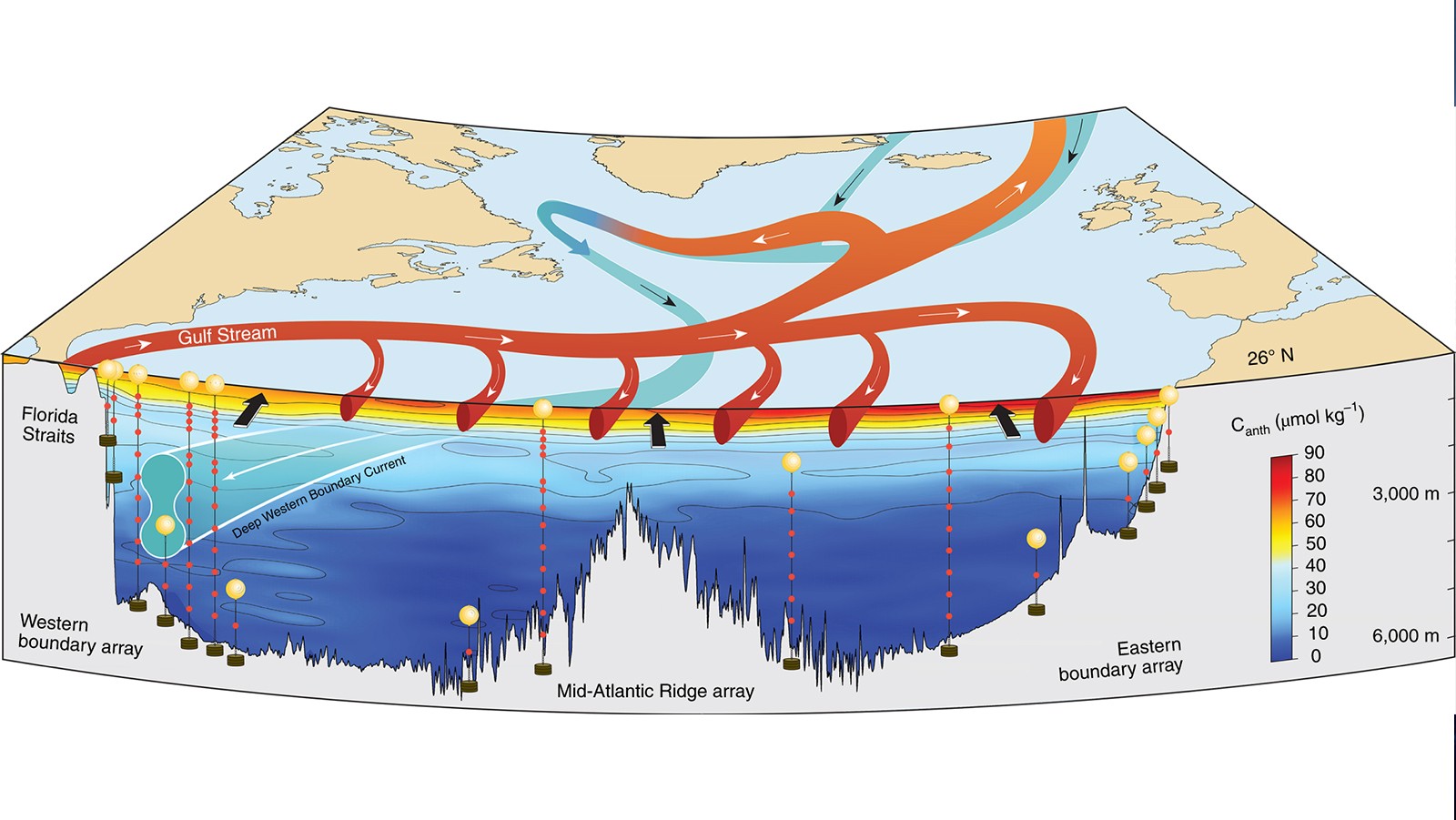In a recently published study in Nature Geoscience, scientists at AOML and international partners quantified the strength and variability of anthropogenic (man-made) carbon (Canth) transport in the North Atlantic Ocean. The study found that buildup of Canth in the North Atlantic is sensitive to the Atlantic Meridional Overturning Circulation (AMOC) strength and to Canth uptake at the ocean’s surface.
Anthropogenic carbon (Canth) refers to carbon dioxide released into the atmosphere by human activities, such as the burning of fossil fuels, land use, industrial processes, and other sources. A quarter of anthropogenic carbon is absorbed by the ocean, helping reduce the pace of atmospheric greenhouse gas carbon dioxide (CO2) buildup and thus climate change.
The AMOC is the Atlantic Ocean component of the global Meridional Overturning Circulation (MOC). The MOC plays a major role in redistributing heat, salt, dissolved oxygen, nutrients, and carbon throughout the global climate system. Variations of the MOC can have important societal impacts on coastal sea levels, marine heat waves, extreme weather events, and shifts in regional surface temperature and precipitation patterns. In particular, the AMOC is known to have a large influence on weather and climate for countries adjacent to the North Atlantic Ocean.

The study shows a novel aspect of the MOC in how it directly impacts carbon movement throughout the ocean and particularly how much Canth moves northward. Carbon is absorbed at the ocean surface and the MOC moves the majority of this carbon-enriched surface water northward, where it sinks to the bottom of the ocean, and returns southward as the lower layer of the MOC.
The North Atlantic Ocean is a key region of interest to stakeholders because a disproportionately large amount of Canth ends up in the North Atlantic due to its northward transport by the AMOC and air–sea exchange.
To determine the strength and variability of anthropogenic carbon transport across 26.5°N in the North Atlantic, measurements obtained between 2004 and 2012 from the RAPID mooring array and hydrographic ship observations were used. It was found that decreases in ocean circulation strength tended to decrease northward Canth transport. However, this was balanced by increasing concentrations of Canth absorbed by the ocean that increased northward Canth transport.

If the strength of the MOC decreases, less carbon would enter the deep ocean. However, what was observed in the study is that even if the strength of the MOC declines, the ocean’s capture of increasing amounts of Canth would significantly impact the transport of Canth into the North Atlantic Ocean in the future.
“This study is the first time ever that we tried to estimate the time variability of carbon transport, which has impacts on ocean acidification, marine life, human food supply, etc. The results show how variable ocean circulation is and how complicated the relationship between the MOC and carbon is. Changes in the strength of the MOC are cancelled out by changes in the uptake of carbon on surface waters. This study is an important step to understanding these processes to better predict changes in the future,” said Molly Baringer, AOML scientist and co-author of the study.
Before this study, the variability of the ocean circulation contribution to regional Canth storage and the resilience to global change were largely unknown. This research shows a new aspect of the impact of the AMOC on carbon cycling, in particular, the transport of anthropogenic carbon into the North Atlantic Ocean.

AOML has been a long-standing leader of research on the physical transports of the AMOC and its Western Boundary currents. This work is an extension into the biogeochemical and biological realms, which is an important step for meeting the goals of the integrated All-Atlantic Ocean Observing System (AtlantOS).
